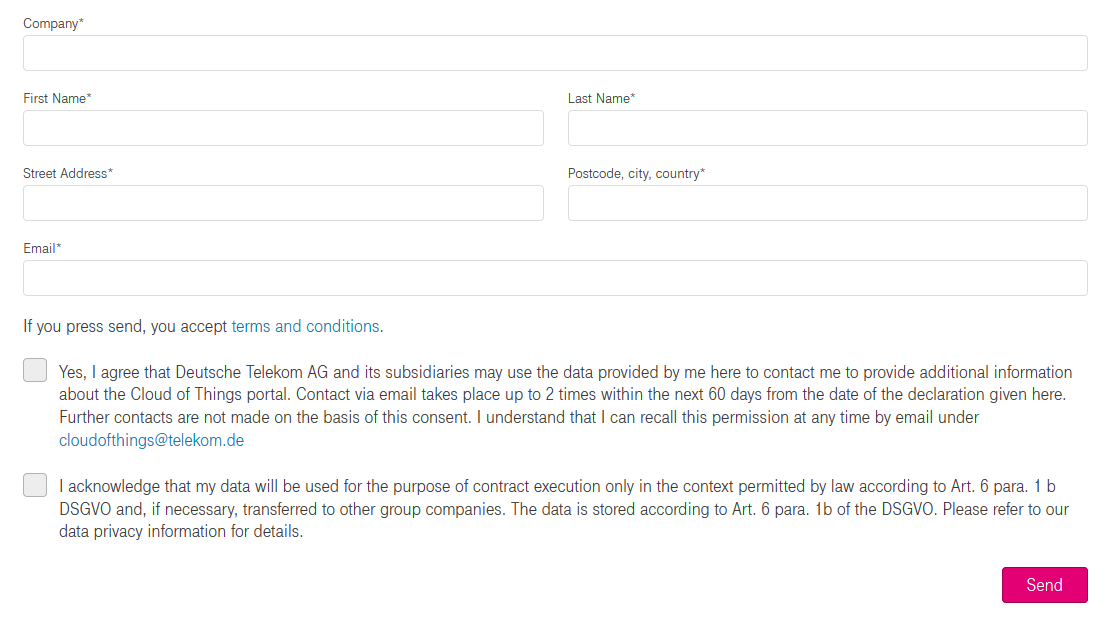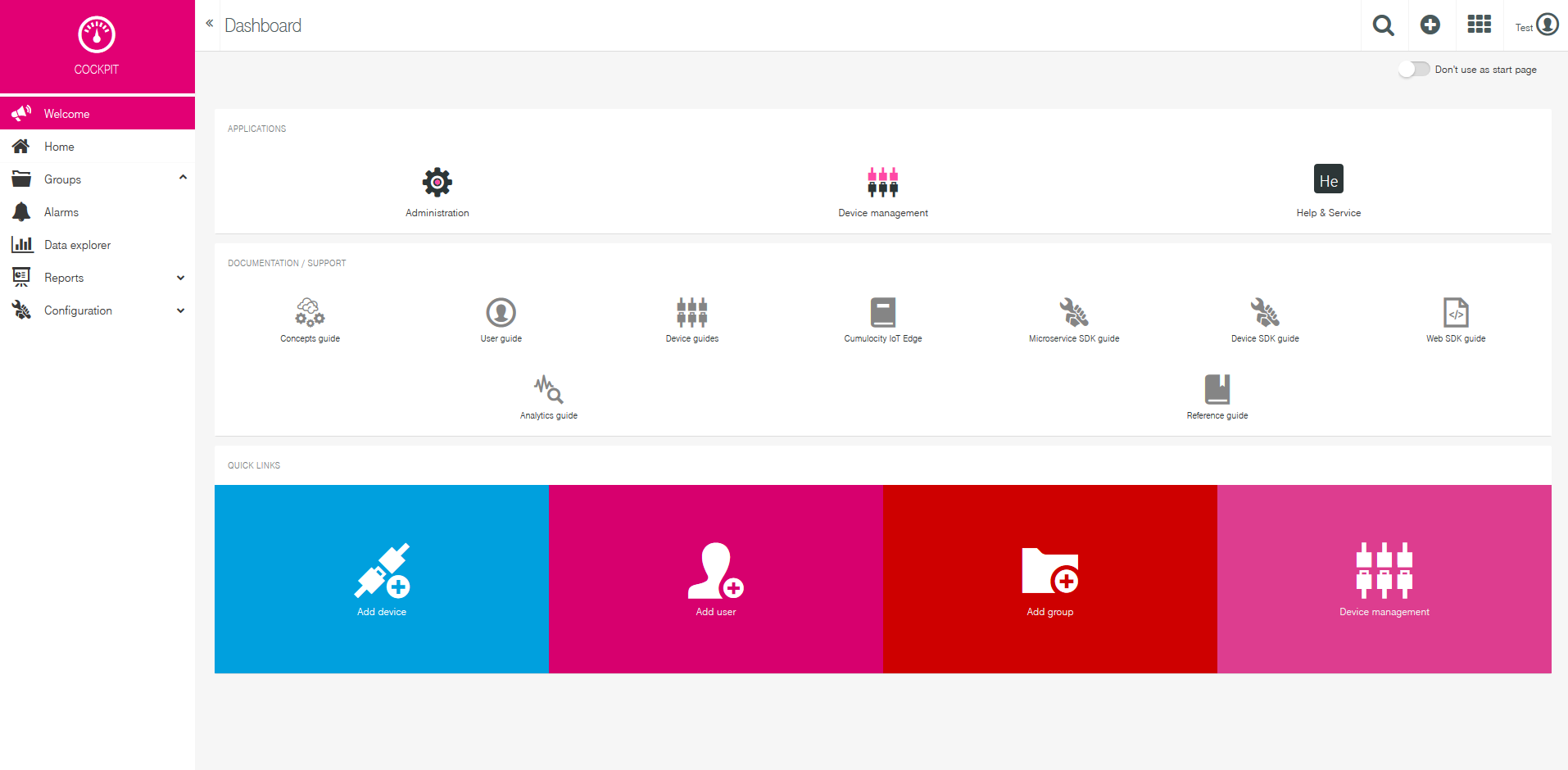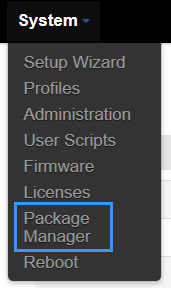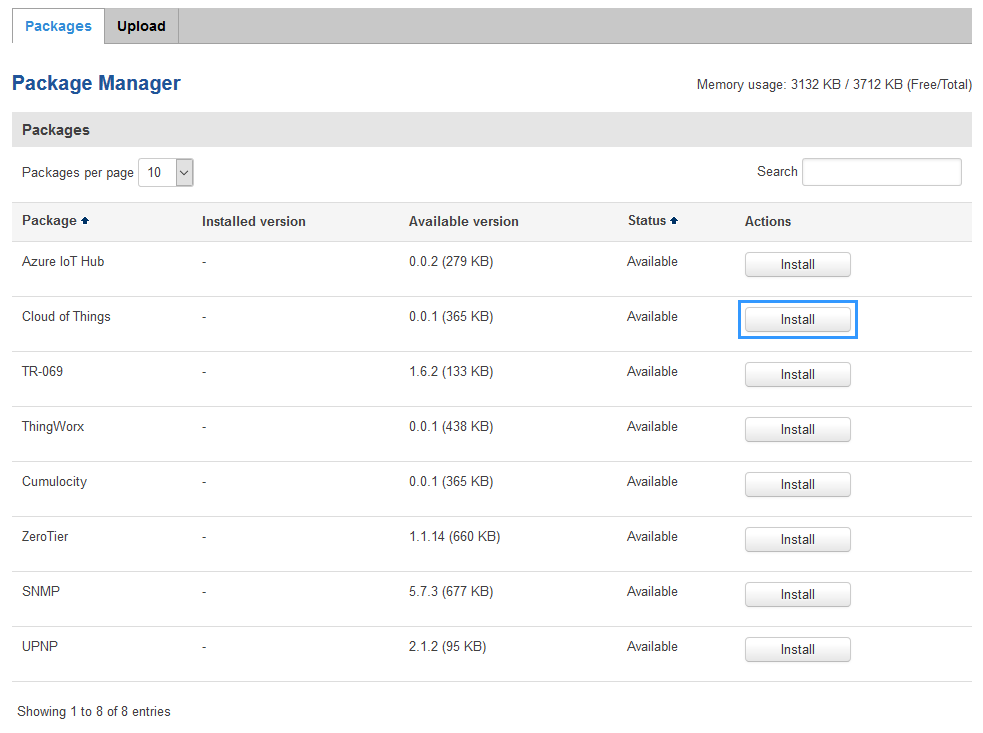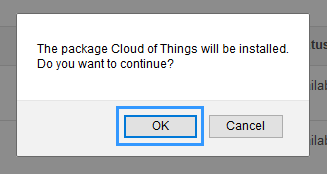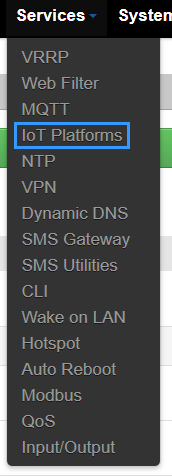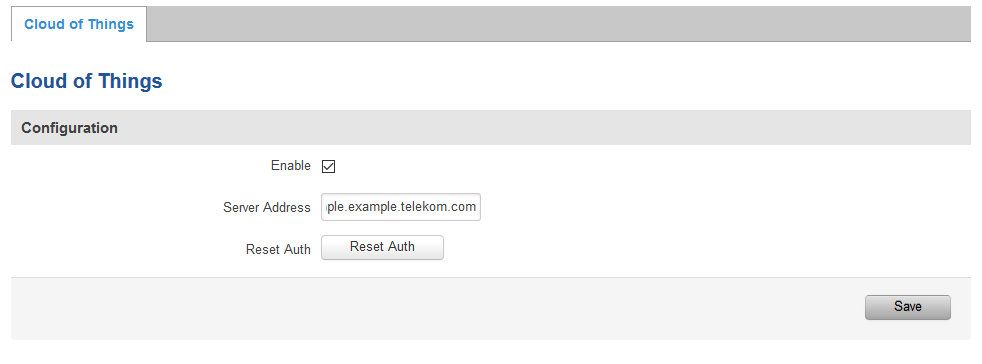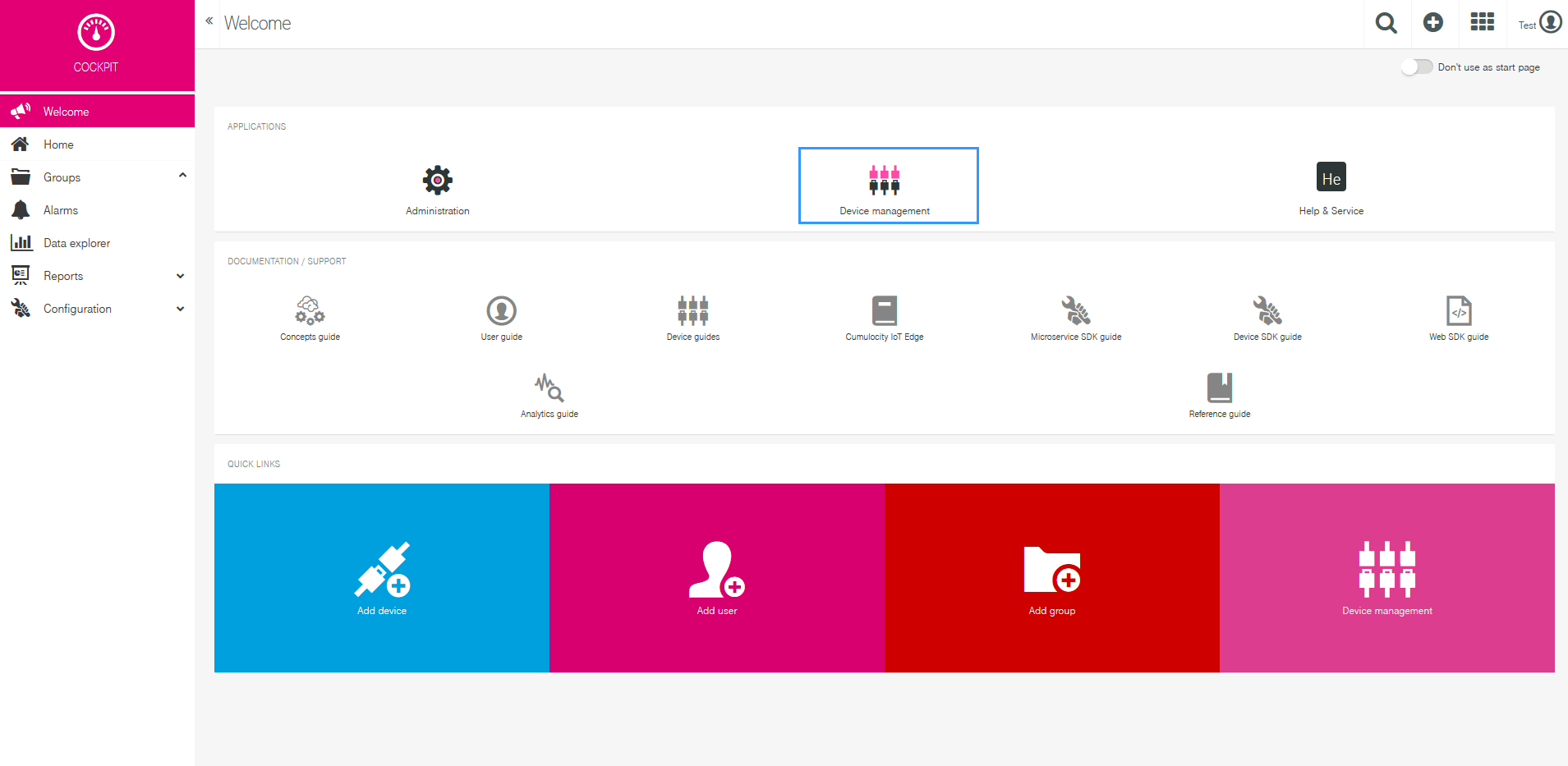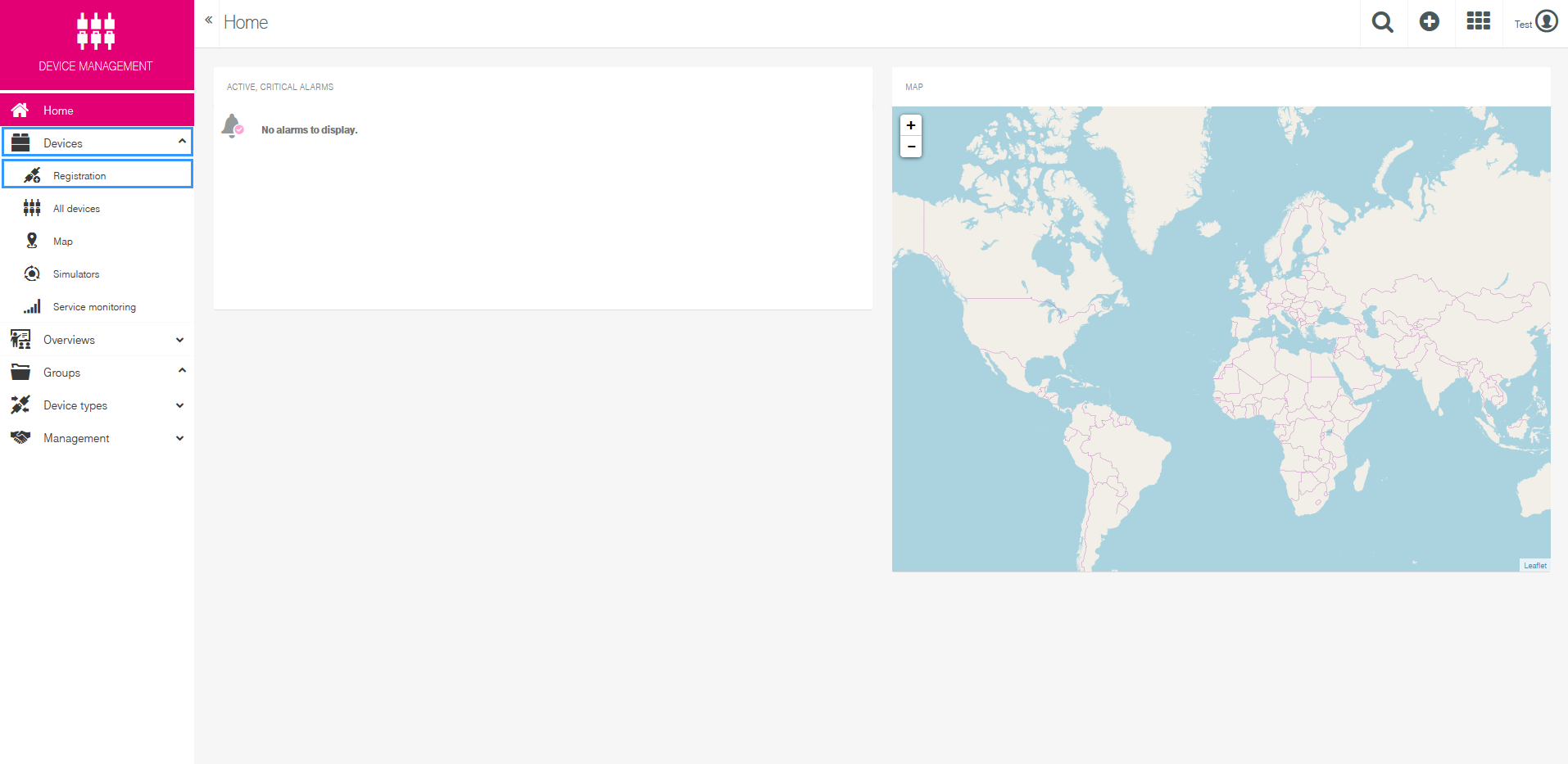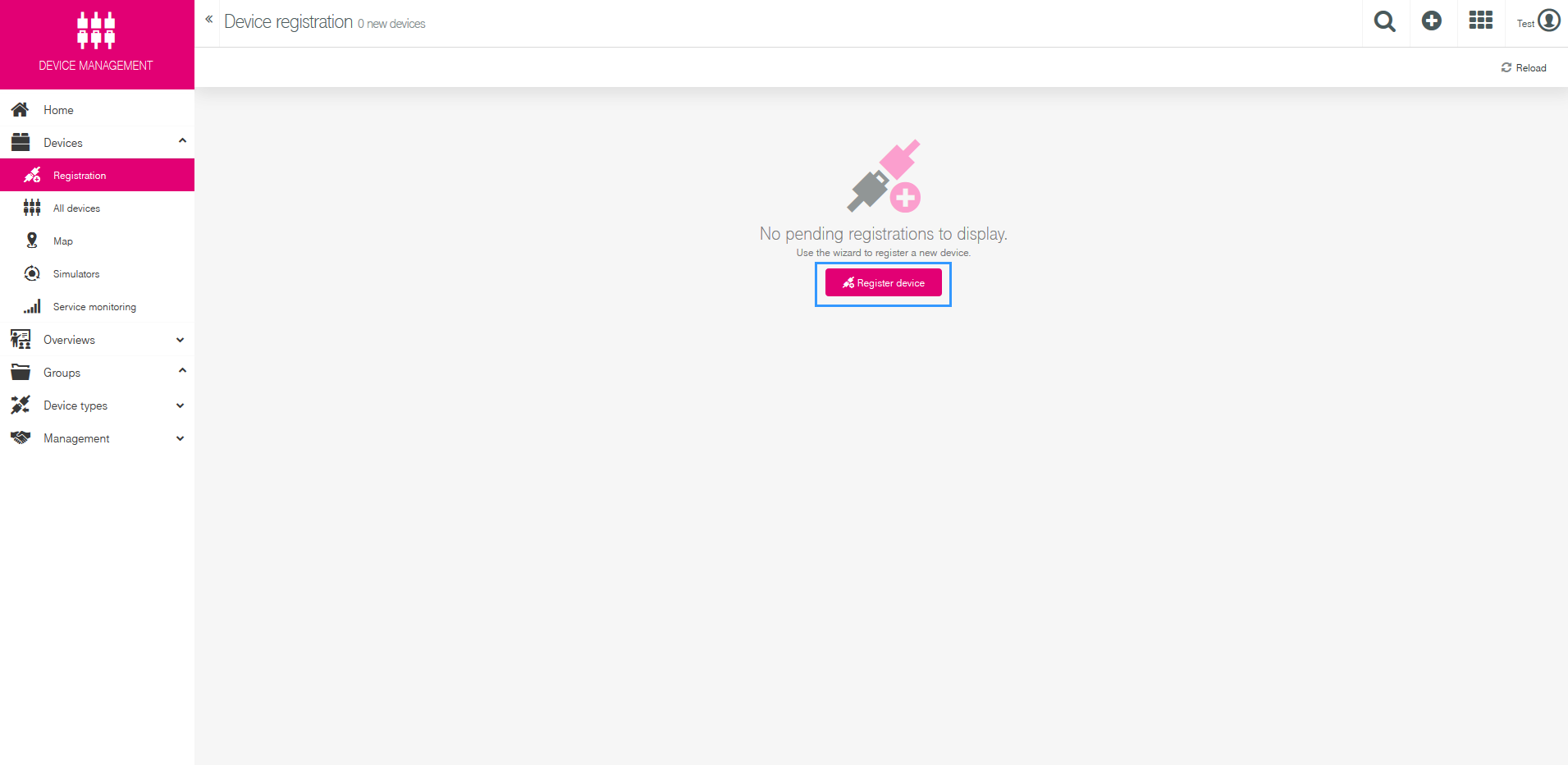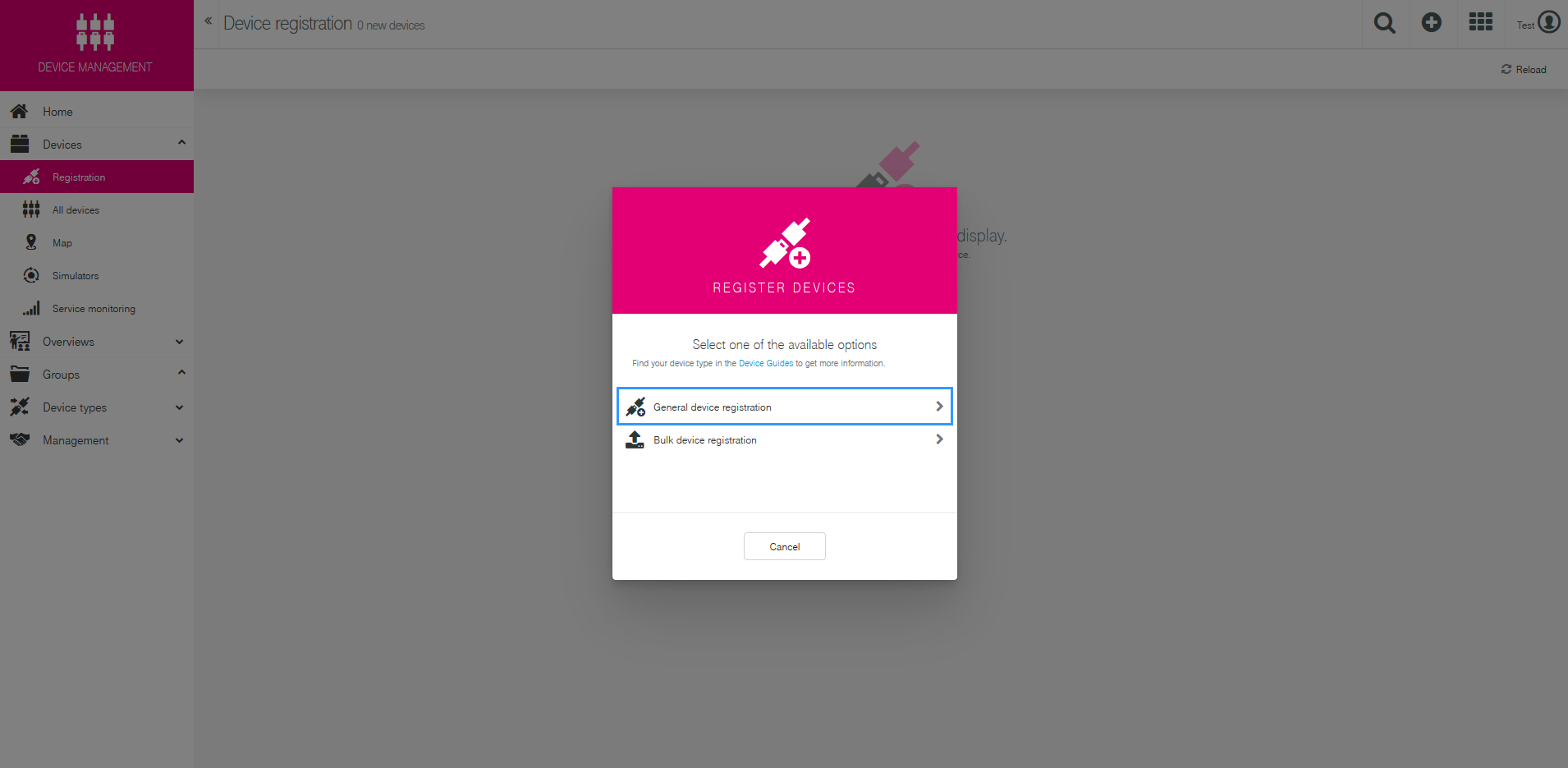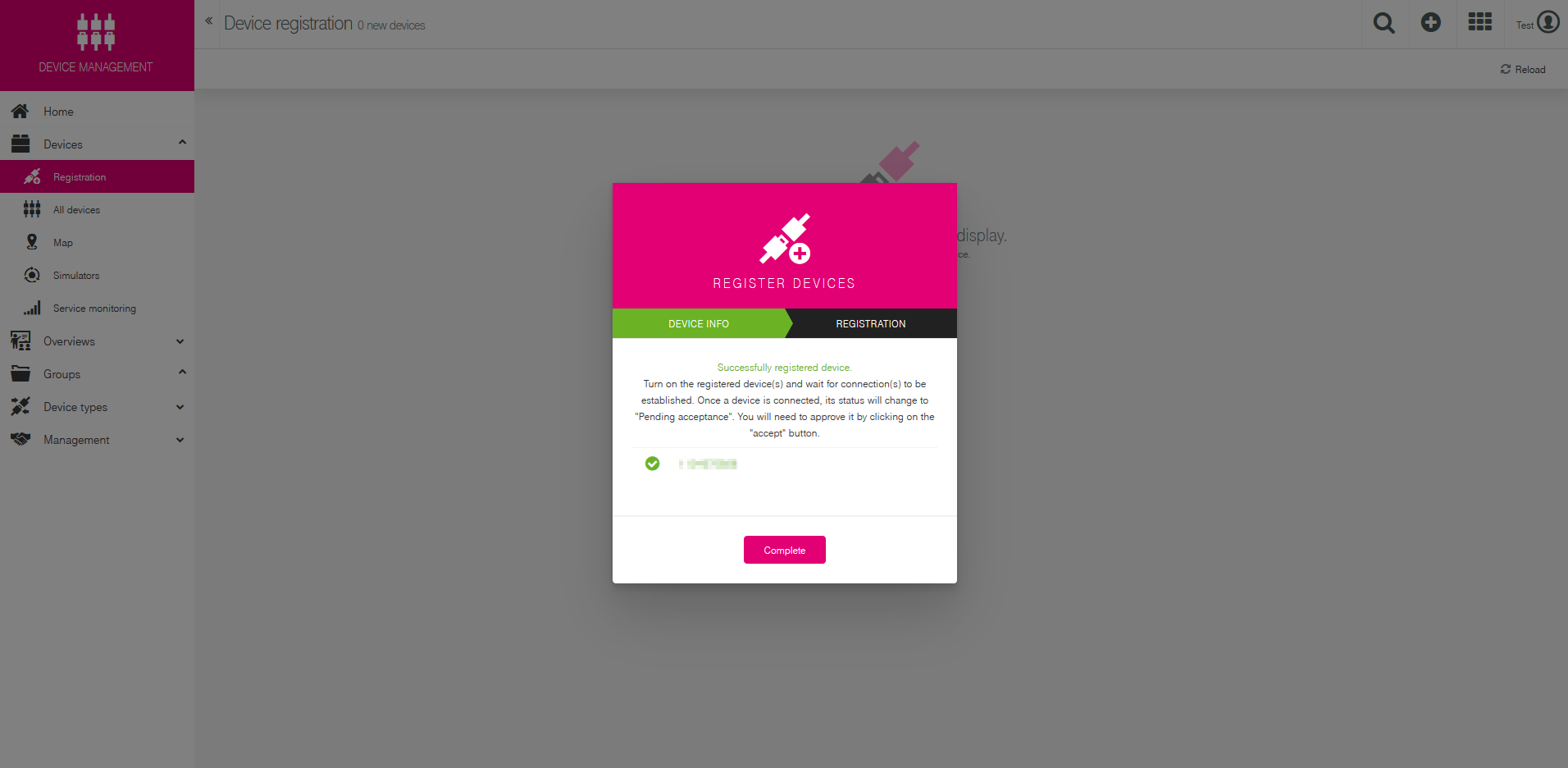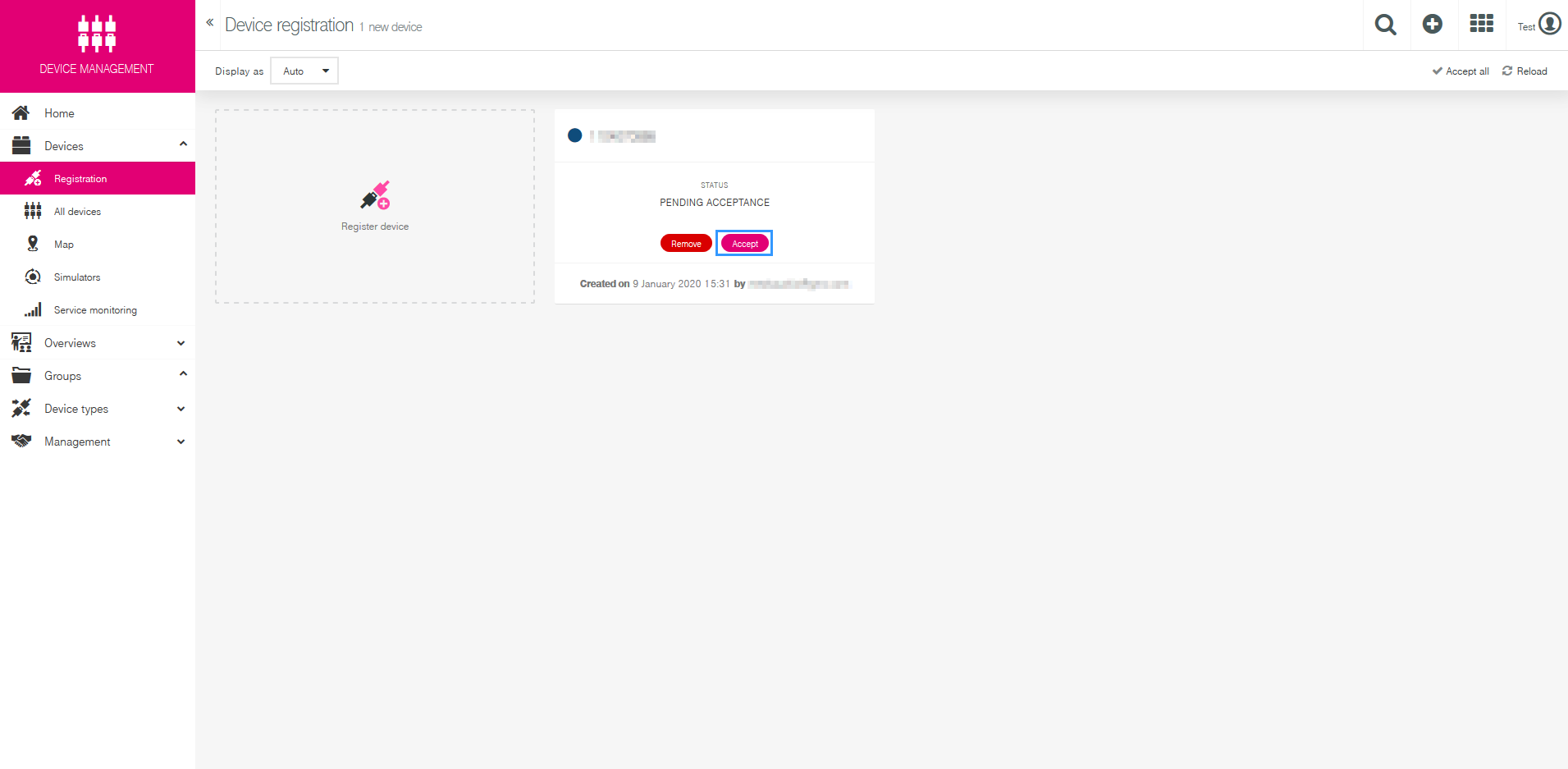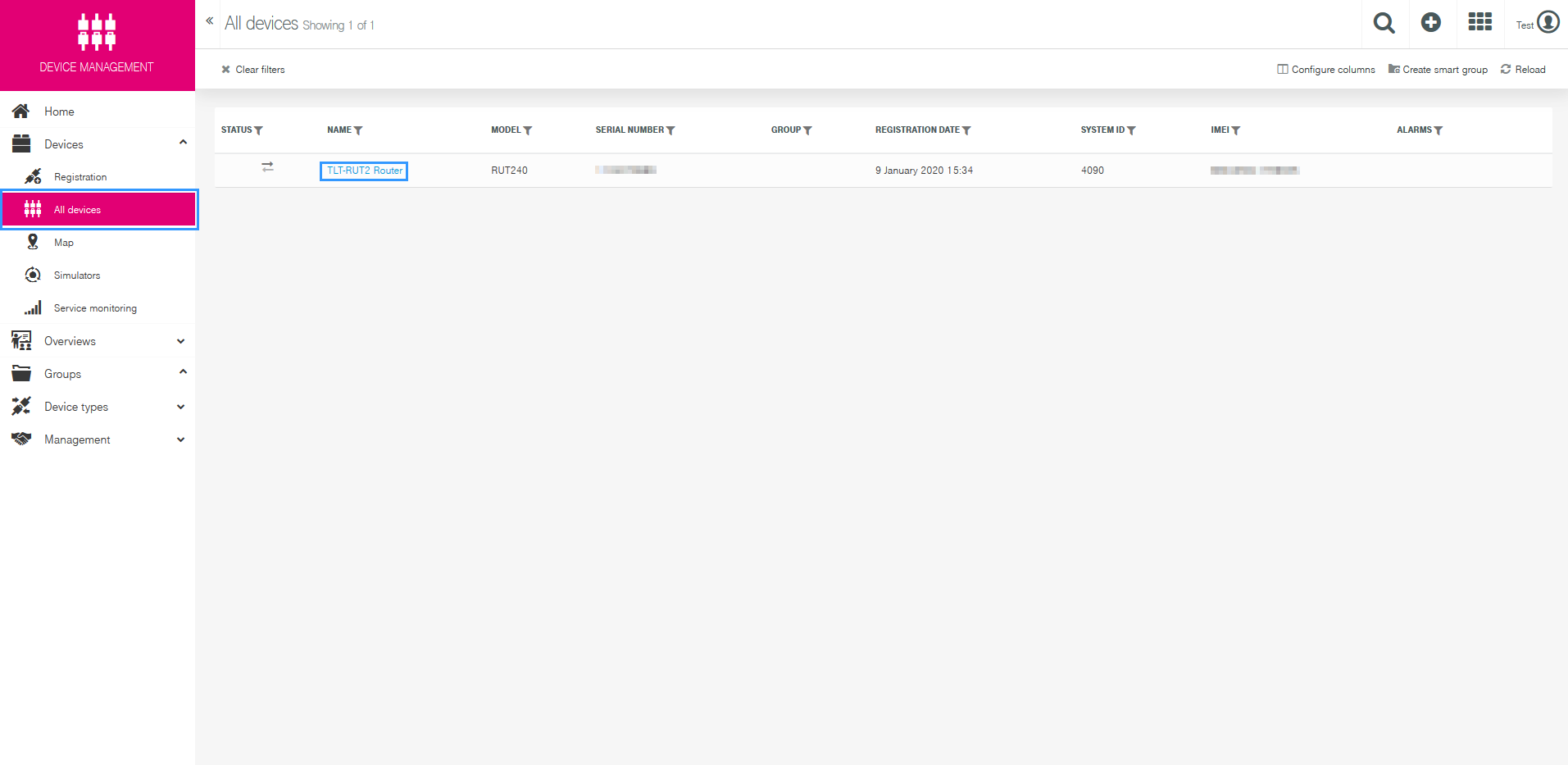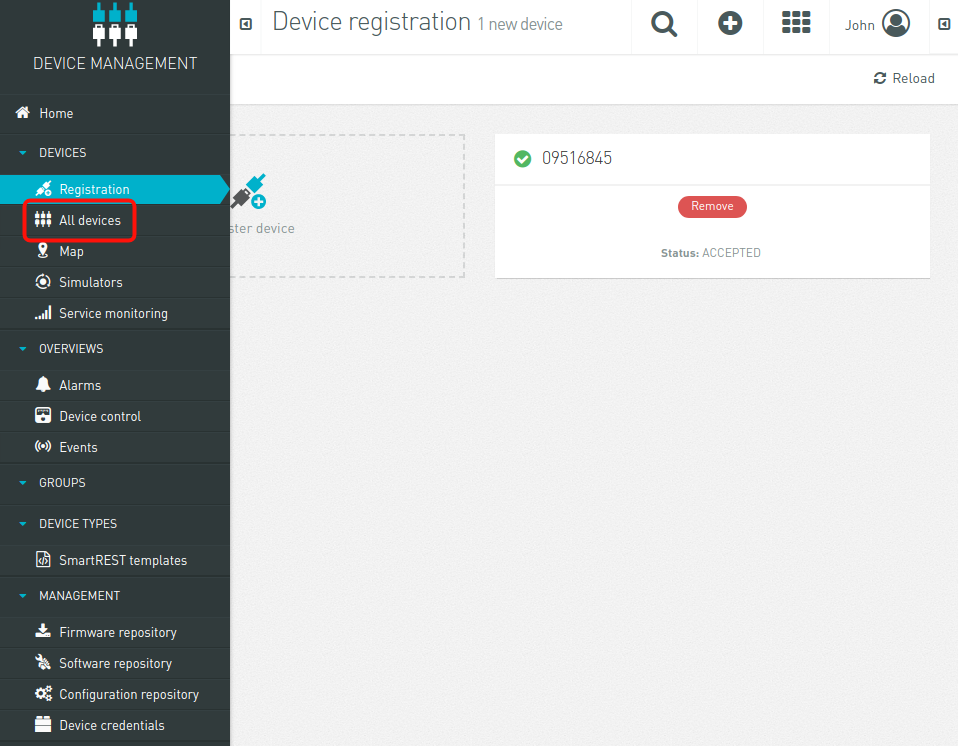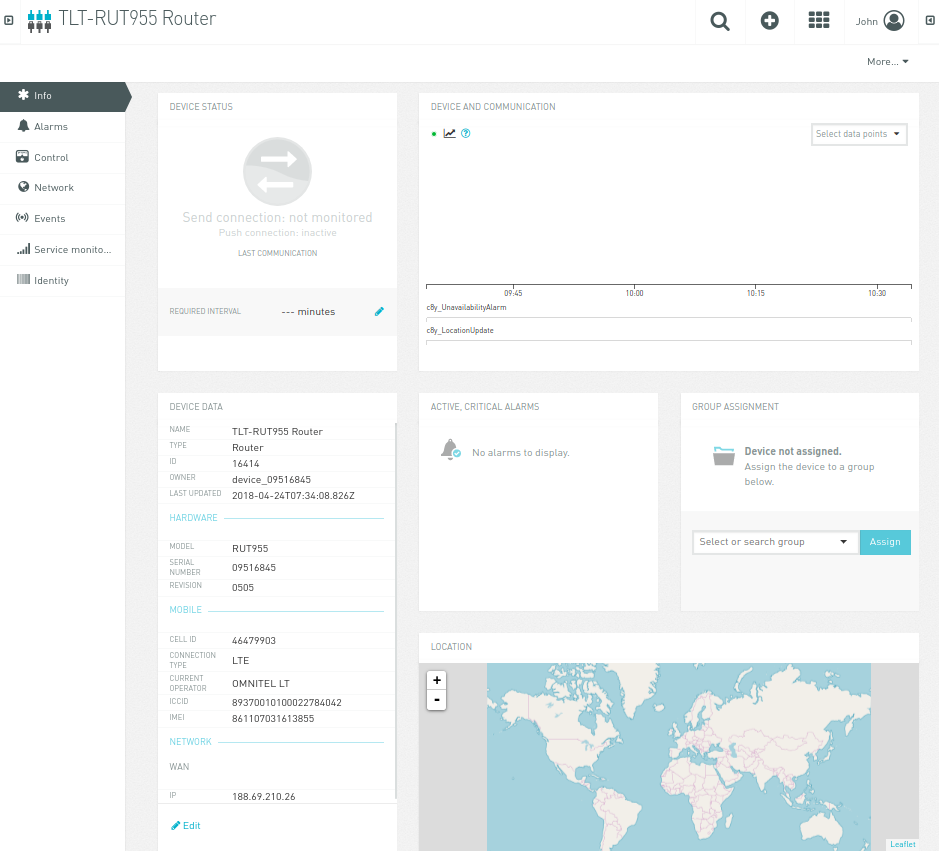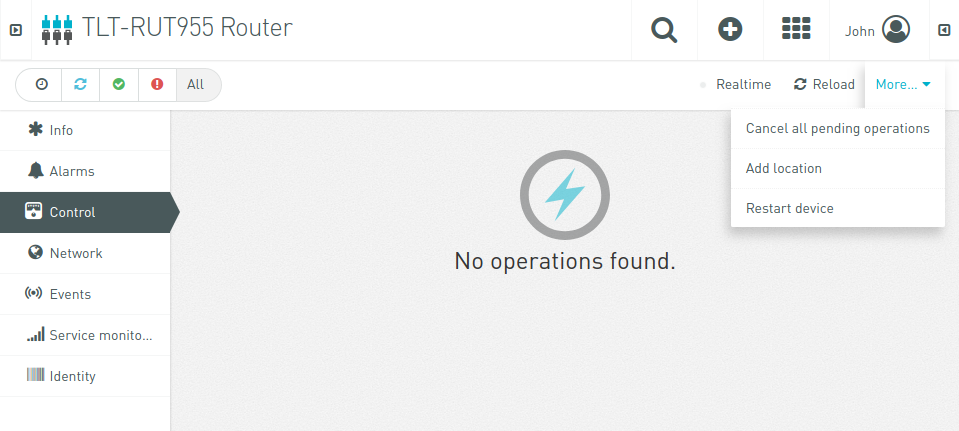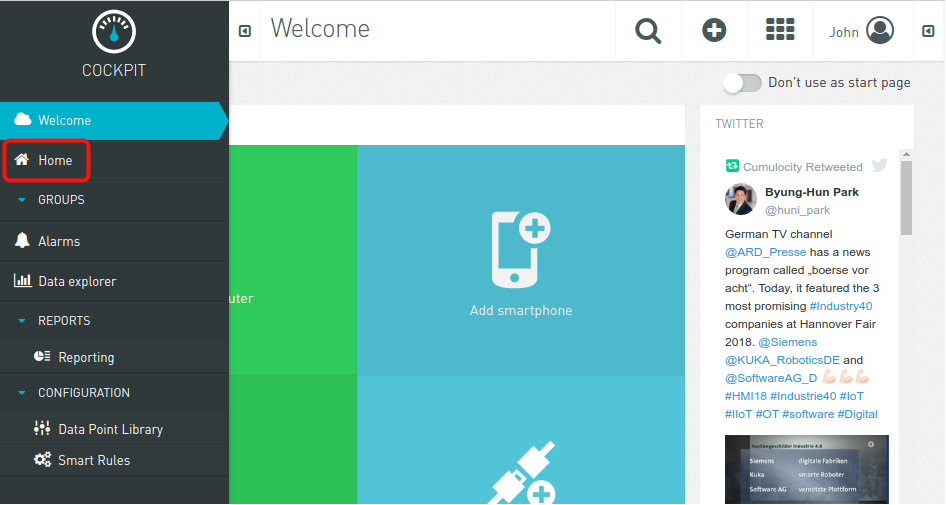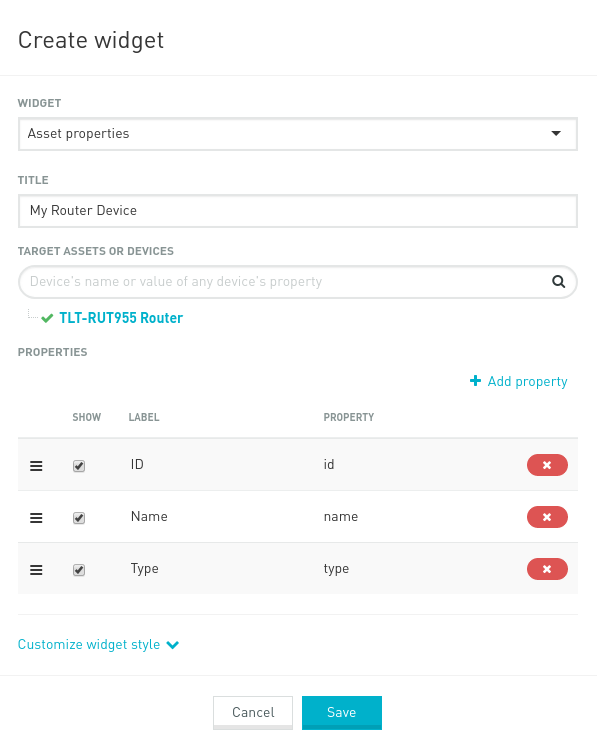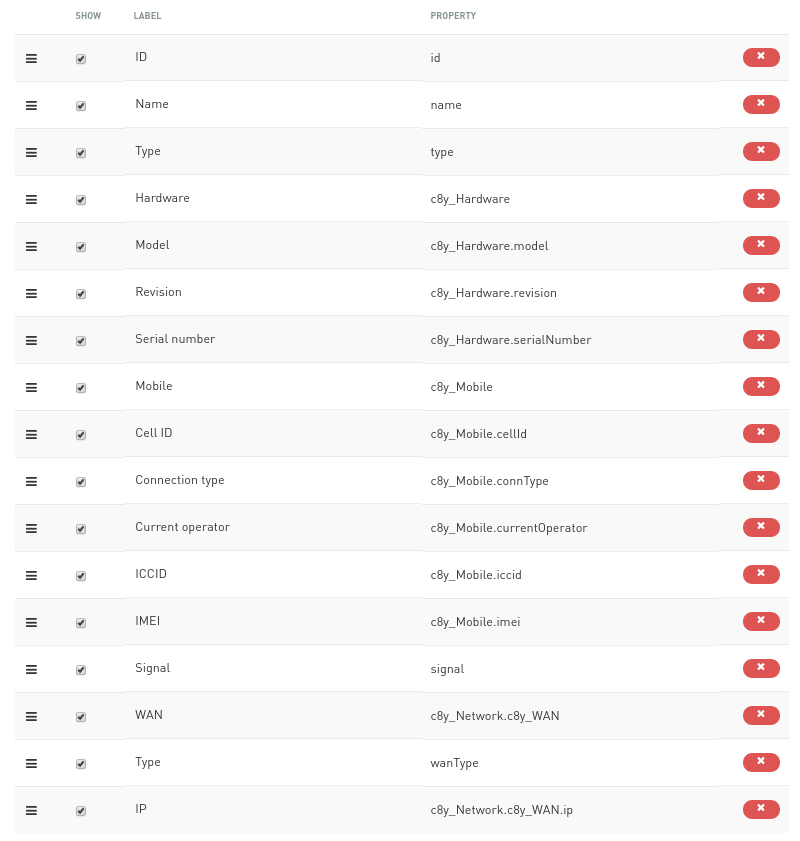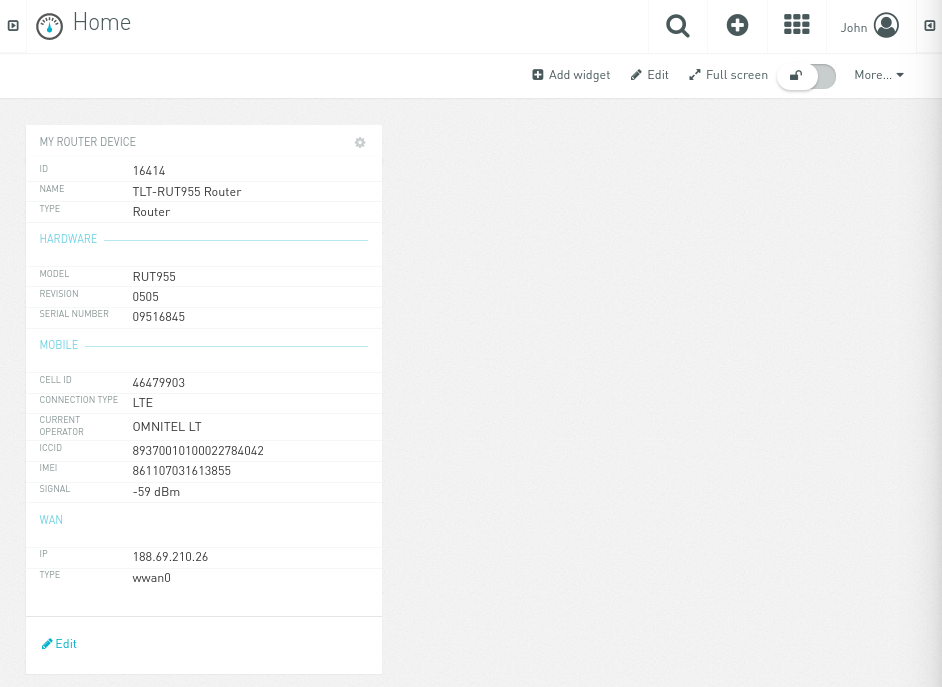Difference between revisions of "Template:Networking rut cloud of things"
| (23 intermediate revisions by the same user not shown) | |||
| Line 1: | Line 1: | ||
[[File:Networking rut telekom logo.png|right|160px]] | [[File:Networking rut telekom logo.png|right|160px]] | ||
| − | '''Telekom Cloud of Things''' is now compatible with Teltonika | + | '''Telekom Cloud of Things''' is now compatible with Teltonika RUT routers. |
==Description== | ==Description== | ||
| − | The '''Cloud of Things''' is | + | The '''Cloud of Things''' is cloud platform for the Internet of Things. It allows you to remotely monitor, manage and control your connected devices and machines – plug-and-play, without extensive installation. |
==Summary== | ==Summary== | ||
| − | This example | + | This example application streams some information from the router device. Once it is enabled you should be able to the following things in Cloud of Things Cockpit the following information from your router: |
| − | + | Device Model, Revision and Serial Number | |
| − | + | Mobile Cell ID, ICCID, IMEI, Connection Type, Operator, Signal Strength | |
| − | + | WAN Type and IP | |
| − | + | Mobile and WAN information are sent from “stream” Lua script, while Device information - from stream application. This information (except Device) is being sent to the main Cumulocity server continuously: at 10 seconds interval. | |
| − | |||
| − | + | ???????????????????????????????? | |
| + | |||
==Creating an account== | ==Creating an account== | ||
| − | First of all, you need to create an account. After registration, you will receive free 60 days Cloud of Things trial. Registration form can be found here: https://support.ram.m2m.telekom.com/apps/demotenant/index.html#/ . Below you can see | + | First of all, you need to create an account. After registration, you will receive free 60 days Cloud of Things trial. Registration form can be found here: https://support.ram.m2m.telekom.com/apps/demotenant/index.html#/ . Below you can see registration form: |
| − | |||
[[Image:CoT_Demo_Account.png]] | [[Image:CoT_Demo_Account.png]] | ||
| − | |||
After successful registration you will receive an email with your account details (URL, username, password) and after logging in, you will be redirected to Cloud of Things Cockpit portal, see below: | After successful registration you will receive an email with your account details (URL, username, password) and after logging in, you will be redirected to Cloud of Things Cockpit portal, see below: | ||
| Line 31: | Line 29: | ||
[[Image:Cloud of things cockpit.png]] | [[Image:Cloud of things cockpit.png]] | ||
| − | == | + | ==Package installing and device registering== |
| − | Cloud of Things IoT platform is not included in standart software package | + | Cloud of Things IoT platform is not included in standart software package. So it order to use it you will need to install it first. Go to '''System>Package Manager.''' |
| Line 39: | Line 37: | ||
| − | There you will find all the available packages. The one you need is called '''Cloud of Things'''. In order to install it | + | There you will find all the available packages. The one you need is called '''Cloud of Things'''. In order to install it press '''Install''' button. |
| Line 45: | Line 43: | ||
| − | Then it will ask | + | Then it will ask your confirmation, whether you want to install the package. Press '''OK''' to continue. |
| Line 63: | Line 61: | ||
| − | In order to use the feature | + | In order to use the feature you will need to enable it, write '''Server Address''' and press '''Save.''' The server address is the link which was provided by '''Cloud of Things'''. |
(E.g. example.example.example.telekom.com) | (E.g. example.example.example.telekom.com) | ||
| Line 73: | Line 71: | ||
P.S. In order to re-register a device on Cloud of Things platform, you need to press '''Reset Auth''' button. If you are registering the device for the first time, pressing the button is not necessary. | P.S. In order to re-register a device on Cloud of Things platform, you need to press '''Reset Auth''' button. If you are registering the device for the first time, pressing the button is not necessary. | ||
| − | == | + | ==Adding devices on Cloud of Things platform== |
| + | After successfully installing the package and making the required configuration on the router, you now can add the device on Cloud of Things platform. After logging in to the website you are forwarded to Cockpit page. There press '''Device manager'''. | ||
| − | Cloud of | + | [[Image:Cloud of things adding device 1.png]] |
| + | Then select '''Devices''' and press '''Registration'''. | ||
| − | [[Image:Cloud of things | + | [[Image:Cloud of things adding device 2.png]] |
| + | Press '''Register device'''. | ||
| − | + | [[Image:Cloud of things adding device 3.png]] | |
| − | [[Image:Cloud of things | ||
| + | There are two ways to register your device(s) '''Bulk''' and '''General'''. Bulk is used when you are registering a lot of devices at once. In this example we will be using the '''General''' option. | ||
| − | + | [[Image:Cloud of things adding device 4.png]] | |
| + | In '''Device ID''' section write the serial number of your router. You can add more than one item by pressing '''Add another device''' button. There is a possibility to assign your routers to groups, but we are not doing that in this example.[[Image:Cloud of things adding device 5.png]] | ||
| − | + | If everything was done correctly, it will show you that the registration was successful. | |
| + | [[Image:Cloud of things adding device 6.png]] | ||
| − | + | Then you will need to '''Accept''' the '''Pending Acceptance'''. | |
| + | [[Image:Cloud of things adding device 7.png]] | ||
| − | + | Finally you will receive a message showing that the device has been accepted.d. | |
| − | + | [[Image:Cloud of things adding device 8.png]] | |
| + | == Device monitoring == | ||
| + | [[Image:Cloud of things adding device 9.png]] | ||
| − | |||
| − | |||
| − | |||
| + | Click „Accept“ button to accept this device. | ||
| − | + | Now navigate to „All devices“ page: | |
| + | [[File:cumalldevices.png]] | ||
| − | + | Here you should be able to see list of all registered devices: | |
| − | + | [[File:cumallregistereddevices.png]] | |
| − | |||
| − | + | Click on „TLT-RUT955 Router“ name to get into information page: | |
| − | + | [[File:cumdeviceinfo.png]] | |
| − | + | Notice „Device Data“ widget, it contains information from the router device. By navigating to „Control“ tab, you can restart device by clicking „More → Restart Device“: | |
| − | + | [[File:cumdevicecontrol.png]] | |
| − | + | You can go back to Cumulocity Cockpit page the same way you entered Device managemant page: | |
| − | + | [[File:cumnavigatecockpit.png]] | |
| − | + | Then navigate to „Home“ page: | |
| − | + | [[File:cumnavigatehome.png]] | |
| − | + | And then click „Add widget“: | |
| − | + | [[File:cumaddwidget.png]] | |
| − | + | Select „Asset properties“ widget and type title, then select „TLT-RUT955 Router“ in „Target Assets or Devices“: | |
| − | + | [[File:cumcreatewidget.png]] | |
| − | + | To add more information into widget, click „Add property“ and click on „Show“ to add that property. | |
| − | + | In example application, these properties are used: | |
| + | Hardware – Model, Revision, Serial Number | ||
| − | + | Mobile – Cell ID, Connection Type, Current Operator, ICCID, IMEI and Signal | |
| − | + | WAN – IP and Wan Type | |
| − | + | Total properties: | |
| − | + | [[File:cumtotalprops.png]] | |
| − | + | Then click „Save“ and you should be able to see widget with properties you have set: | |
| − | + | [[File:cumdevicewidgetinfo.png]] | |
==External Links== | ==External Links== | ||
| + | https://www.cumulocity.com/try-for-free | ||
| + | |||
| + | https://www.cumulocity.com/guides/reference/smartrest | ||
| − | https:// | + | https://bitbucket.org/m2m/cumulocity-sdk-c/downloads |
{{Template: trademark disclaimer}} | {{Template: trademark disclaimer}} | ||
Revision as of 17:06, 27 November 2019
Telekom Cloud of Things is now compatible with Teltonika RUT routers.
Description
The Cloud of Things is cloud platform for the Internet of Things. It allows you to remotely monitor, manage and control your connected devices and machines – plug-and-play, without extensive installation.
Summary
This example application streams some information from the router device. Once it is enabled you should be able to the following things in Cloud of Things Cockpit the following information from your router:
Device Model, Revision and Serial Number
Mobile Cell ID, ICCID, IMEI, Connection Type, Operator, Signal Strength
WAN Type and IP
Mobile and WAN information are sent from “stream” Lua script, while Device information - from stream application. This information (except Device) is being sent to the main Cumulocity server continuously: at 10 seconds interval.
????????????????????????????????
Creating an account
First of all, you need to create an account. After registration, you will receive free 60 days Cloud of Things trial. Registration form can be found here: https://support.ram.m2m.telekom.com/apps/demotenant/index.html#/ . Below you can see registration form:
After successful registration you will receive an email with your account details (URL, username, password) and after logging in, you will be redirected to Cloud of Things Cockpit portal, see below:
Package installing and device registering
Cloud of Things IoT platform is not included in standart software package. So it order to use it you will need to install it first. Go to System>Package Manager.
There you will find all the available packages. The one you need is called Cloud of Things. In order to install it press Install button.
Then it will ask your confirmation, whether you want to install the package. Press OK to continue.
It will take a moment to install, but when it is done, you will receive a message.
When the package is installed, a new window in Services section will appear, IoT Platforms.
In order to use the feature you will need to enable it, write Server Address and press Save. The server address is the link which was provided by Cloud of Things.
(E.g. example.example.example.telekom.com)
P.S. In order to re-register a device on Cloud of Things platform, you need to press Reset Auth button. If you are registering the device for the first time, pressing the button is not necessary.
Adding devices on Cloud of Things platform
After successfully installing the package and making the required configuration on the router, you now can add the device on Cloud of Things platform. After logging in to the website you are forwarded to Cockpit page. There press Device manager.
Then select Devices and press Registration.
Press Register device.
There are two ways to register your device(s) Bulk and General. Bulk is used when you are registering a lot of devices at once. In this example we will be using the General option.
In Device ID section write the serial number of your router. You can add more than one item by pressing Add another device button. There is a possibility to assign your routers to groups, but we are not doing that in this example.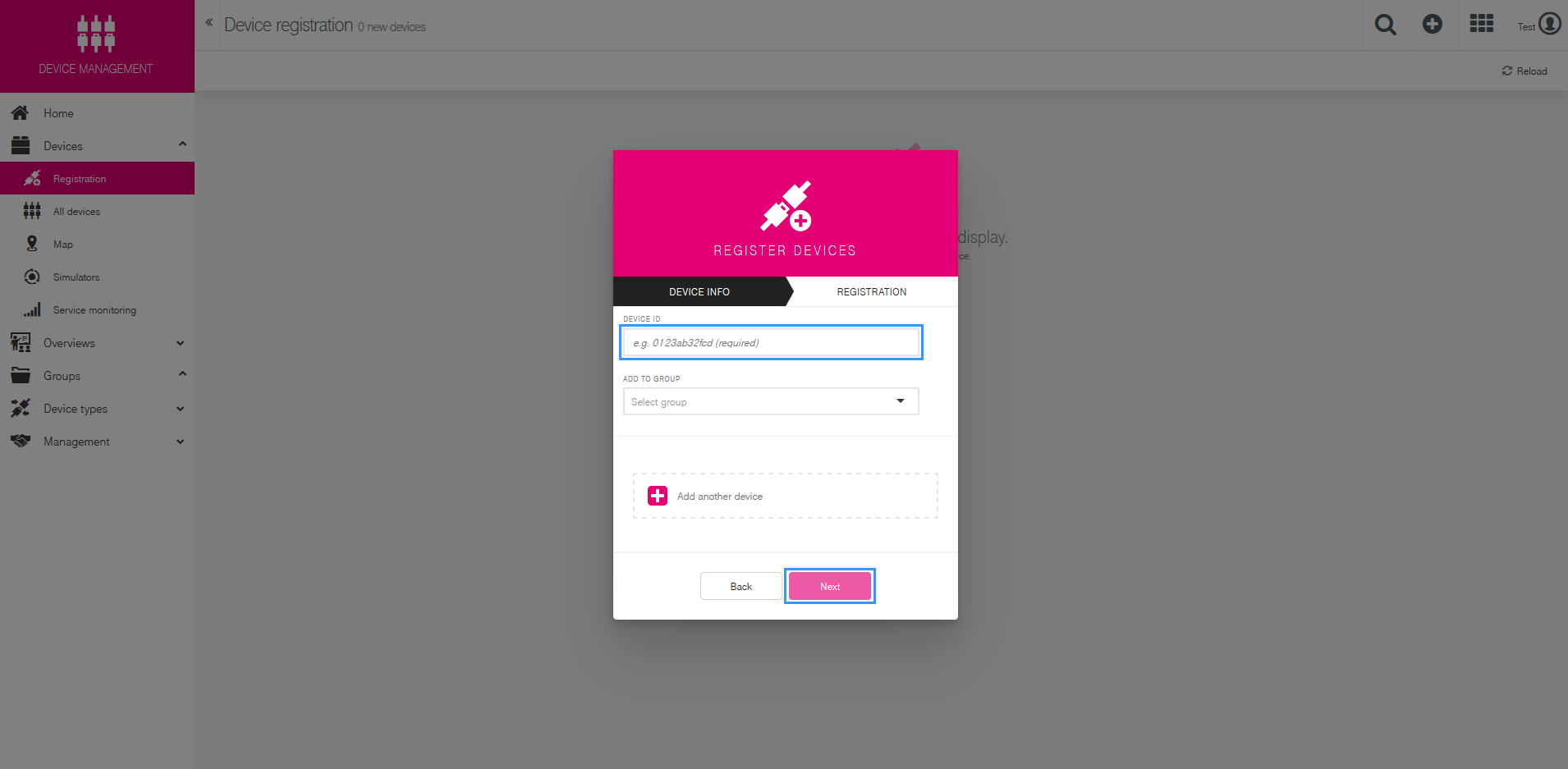
If everything was done correctly, it will show you that the registration was successful.
Then you will need to Accept the Pending Acceptance.
Finally you will receive a message showing that the device has been accepted.d.
Device monitoring
Click „Accept“ button to accept this device.
Now navigate to „All devices“ page:
Here you should be able to see list of all registered devices:
Click on „TLT-RUT955 Router“ name to get into information page:
Notice „Device Data“ widget, it contains information from the router device. By navigating to „Control“ tab, you can restart device by clicking „More → Restart Device“:
You can go back to Cumulocity Cockpit page the same way you entered Device managemant page:
Then navigate to „Home“ page:
And then click „Add widget“:
Select „Asset properties“ widget and type title, then select „TLT-RUT955 Router“ in „Target Assets or Devices“:
To add more information into widget, click „Add property“ and click on „Show“ to add that property.
In example application, these properties are used:
Hardware – Model, Revision, Serial Number
Mobile – Cell ID, Connection Type, Current Operator, ICCID, IMEI and Signal
WAN – IP and Wan Type
Total properties:
Then click „Save“ and you should be able to see widget with properties you have set:
External Links
https://www.cumulocity.com/try-for-free
https://www.cumulocity.com/guides/reference/smartrest
https://bitbucket.org/m2m/cumulocity-sdk-c/downloads
Disclaimer:
Any of the trademarks, service marks, collective marks, design rights or similar rights that are mentioned, used or cited in the articles are the property of their respective owners.

